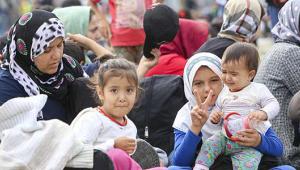Public spending on areas such as pensions, healthcare and unemployment benefits was highest in France at 31.2% of GDP, according to data released by the membership organisation yesterday. Belgium spent 28.9% and Denmark 28.7% of GDP.
The average for 2018 was 20.1%, a little lower than the previous year, which averaged at 20.3%. In 2015 it was an average of 20.5%.
The lowest spending was in Mexico, which paid out just 7.5% last year in social benefits. Chile and Korea forked out a little more - 10.9% and 11.1% of their GDP respectively, the OECD data showed.
Pensions and health remain the largest areas of public social spending in these countries, it found. Willem Adema, from OECD’s social policy division, said this is linked to the aging population across OECD countries.
Spending on pensions was an average of 8% of GDP, while OECD countries spent around 5.7% of GDP on health.
During and after the financial crisis, due to high unemployment, social spending was an average of 21%.
Adema said: “Since the crisis the overall number has been trending down, due to lower spending on unemployment and stronger GDP growth.”
He also explained that countries that have higher social spending tend to have lower poverty rates.
Public spending on social services, including for the elderly and disabled, family services, childcare and housing, increased rapidly before 2010 at an average of 3.6% annually, the OECD said.
However, since then it has continued to grow but at a much slower rate of 0.9% per year in the following five years.
Private social spending on health insurance and pensions was highest in the Netherlands, Switzerland and the US, the report found.






